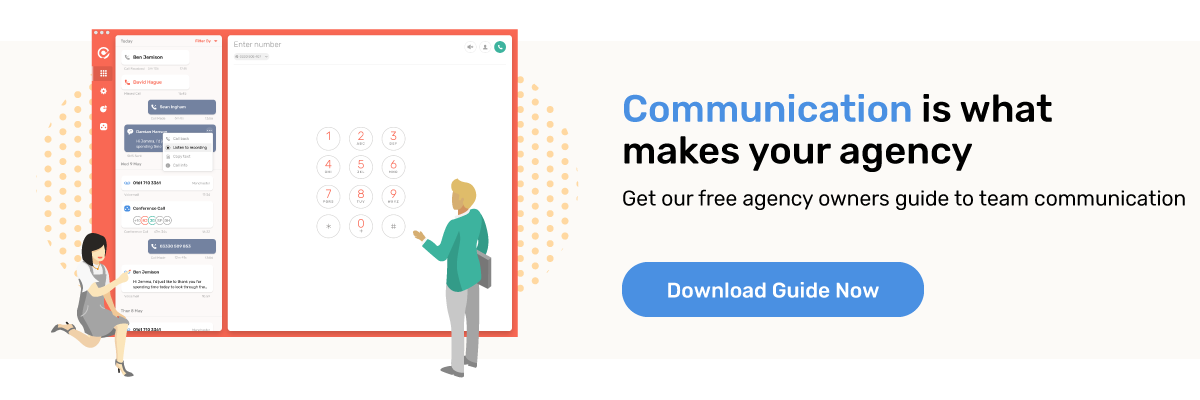No matter how many times you’ve done it in the past, giving feedback to your employees isn’t easy. Especially if it’s negative. You have to find a perfect balance of praise and constructive criticism. Your feedback needs to be firm enough to drive the message home without being ruthless, as being too harsh and focusing too much on the things that have gone wrong may have an adverse affect on productivity and morale.

Providing feedback to your employees comes with the territory of being a manager or a senior figure within a business. There’s definitely a knack to it and a few different ways to tackle it. A level head is required, even though you might want to rip your hair out at times.
We’ve put together seven great tips that will help you when giving feedback to your employees. These tips will help you deliver your feedback in a healthy, constructive yet firm way that will benefit both the employee and the business as a whole.
We’ll cover how to:
- Remain Professional At All Times
- Address the Problem
- Choose Words Carefully
- Be Direct
- Listen As Well As Talk
- Offer a Solution
- Constructiveness is Key
Remain Professional At All Times
There may be decisions that your employees make that damage your client relationships and this may leave you feeling angry and wanting to get to the bottom of it. The likelihood is that this was an error, so the last thing you should do is fly off the handle in a fit of fury. Stay calm.
You can’t expect your employees to be open to criticism if you’re instantaneously grilling them for something that might’ve been a simple, genuine mistake. Nobody means to make a mistake, so stay professional at all times and don’t go pointing fingers.
Address the Problem
Rather than addressing your frustrations with your employee, address the actual problem. By addressing your frustrations instead of the problem itself, your employee will be none the wiser what he/she has done.
Feedback should be something that both parties can learn from so don’t just rant at your employees about what they may have done wrong. Inform them where things have slipped up and what they can do to overcome it and prevent it from happening again in the future.
Neither party will gain anything from a slanging match where both just vent their feelings and forget to address the actual underlying problems.
Choose Words Carefully
The last thing you want to do is risk embarrassing your employees or making them feel 100x worse than they already will do if they know they’ve messed up. Most people will know when they’ve made a pretty serious mistake, so you need to choose your words carefully so you don’t heap more shame on them.
Avoid demoralising terms that could maybe insult your employee. After all, your employees are your most valuable commodity, they work hard every day for your business to pull in the right direction, so the last thing you want to do is throw that back in their faces. Using the wrong words could result in a lack of productivity and even further mistakes down the line.
Phrases such as, "Not quite ready yet," and "There's a bit more work to do until we can send this," are more productive than "It's wrong," or "We can't send this."
Be Direct
If you hold back information when giving feedback to your employees, there’s no point in giving feedback in the first place. This is where it gets tough, as being direct can be an awkward situation. Especially if the feedback is something that the employee might not want to hear.
As we mentioned earlier, you’re meant to learn and build on your feedback, so holding back information is restricting this before you can even start off with a solution. You should be kind but upfront about what you’ve got to say. Be constructive. Obviously, don’t go over the top and start laying into them but at the same time you can't afford to sugarcoat and wrap your employees up in cotton wool either. You need to be crystal clear and avoid all confusion.
Listen As Well As Talk
When giving feedback, you need to hear your employees side of things too. The aim of the conversation is for both parties to come away with something from it, so if you’re not giving your employee any chance to speak what can you possibly learn? By listening to your employee’s side of things, you may uncover a larger problem that you wouldn’t have known about.
Briefings at the start of a task or project might need work, deadlines might be too tight or it might be as simple as your technology is out of date and causing issues.
Offer a Solution
The end goal of giving feedback should be to come up with a solution to the issue raised. Simply, what can you both do to help the employee learn and grow? Plus, what can you both do to ensure that the problem never occurs again?
Constructiveness is Key
Knowing how and when to give feedback is something that will only come with experience as a manager. But don’t fall into the habit of being one of those bosses where you only comment on things once they’ve slipped up. Recognise the good things and offer praise where necessary, it’ll reinforce positive behaviour and will boost office morale too.
Improve Your Company Communication
Businesses live and breathe on the basis of good communication. Feedback is only one way of communicating between the different hierarchical layers of your business. Everyday communication levels need to be high in order for you to operate as efficiently as possible.
If you’re not sure how to keep your communication levels high, don’t worry. We’ve got you covered. We’ve created a guide that includes all things communication and how to make sure that levels don’t slip and have a negative effect on your business. Download your free copy below.
.png)



